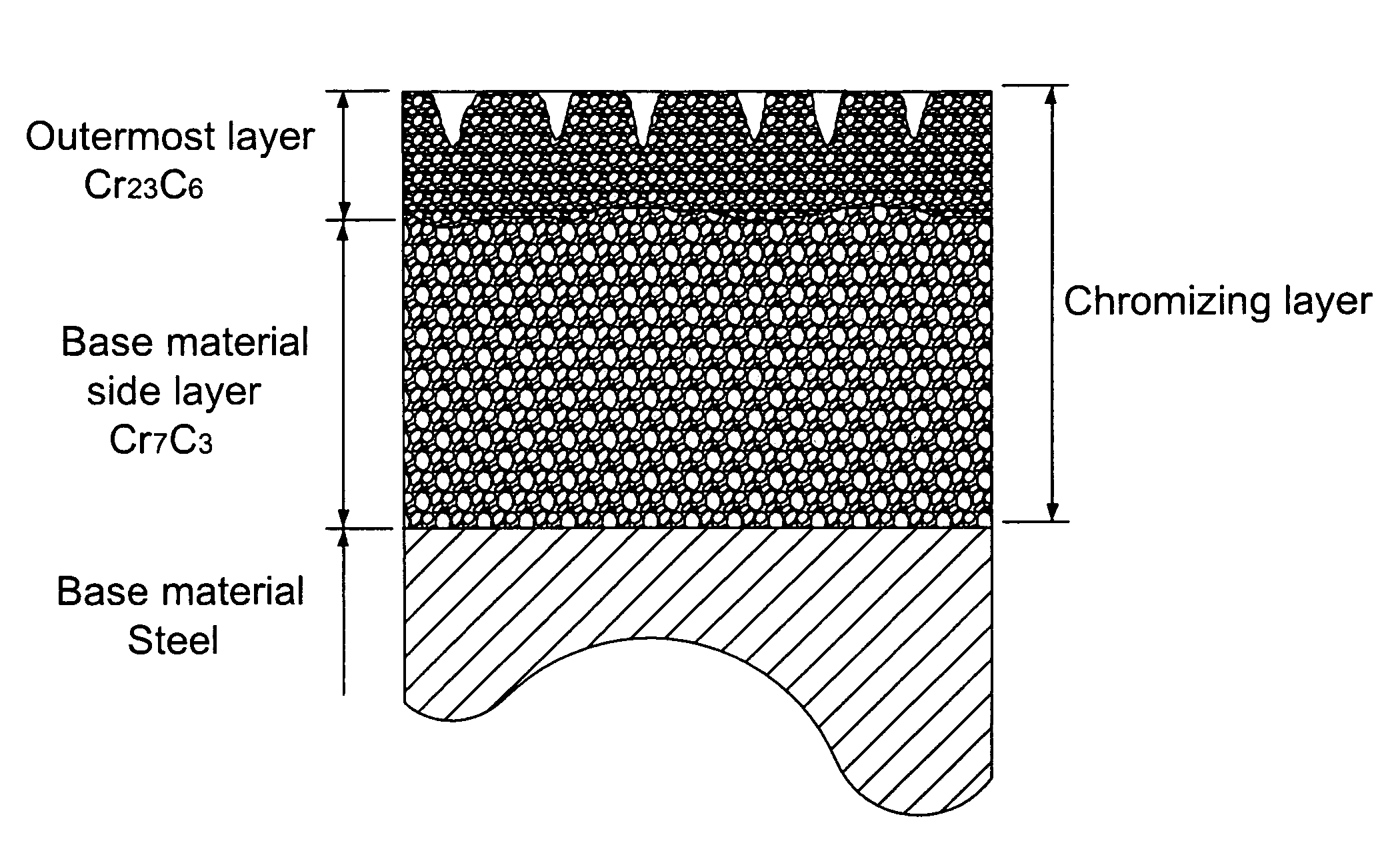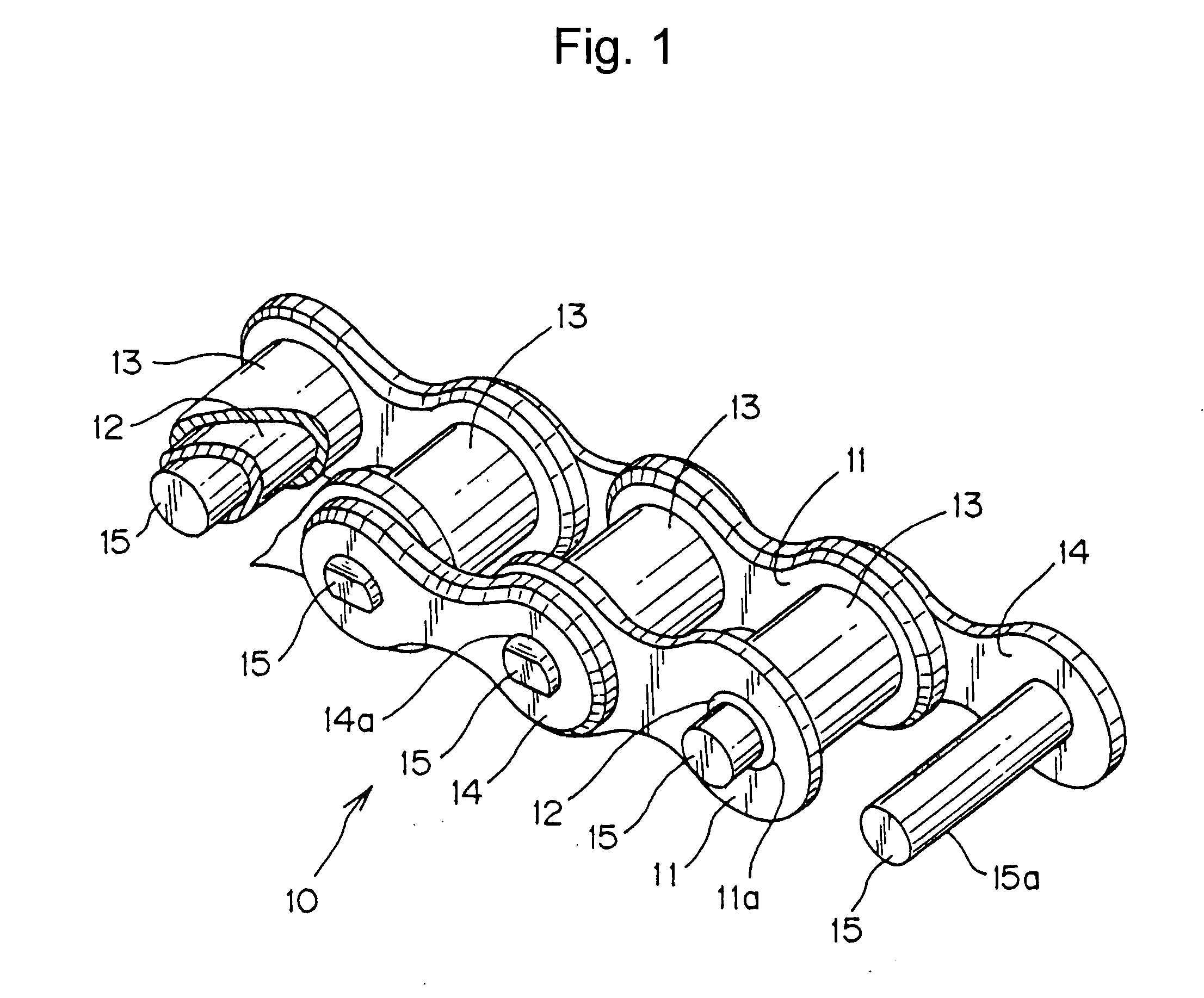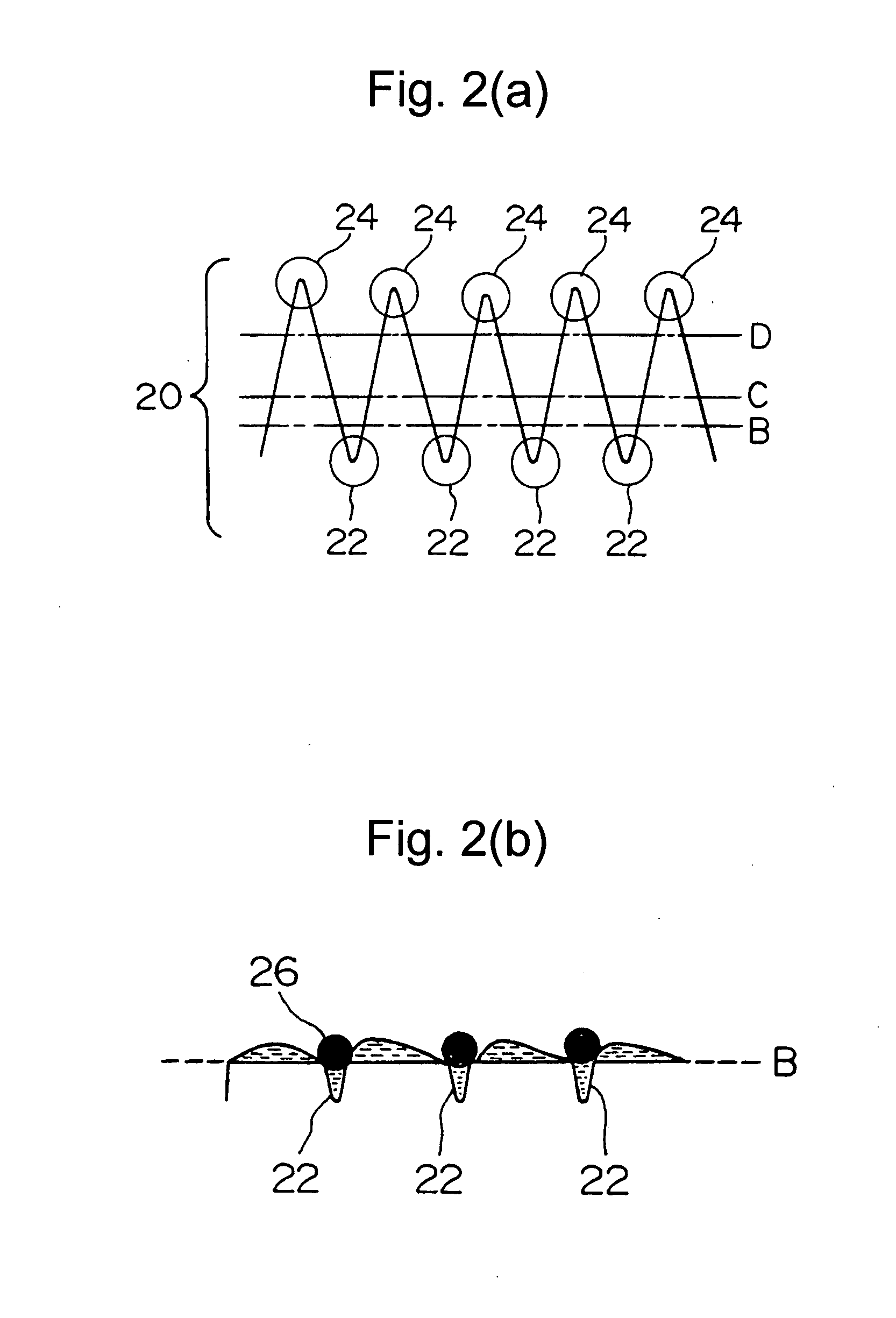Chain for use in automobile engine
a technology for automobile engines and chains, applied in driving chains, solid-state diffusion coatings, mechanical devices, etc., can solve the problems shorten the useful life of the chain, and achieve the suppression of abnormal wear elongation, high hardness, and superior wear resistan
- Summary
- Abstract
- Description
- Claims
- Application Information
AI Technical Summary
Benefits of technology
Problems solved by technology
Method used
Image
Examples
Embodiment Construction
[0030]The invention will be described with reference to a roller chain. However, a purpose of the invention is to reduce deterioration of a chain due to the sliding contact between the inner surface of a bushing and the outer surface of a pin, and the principles of the invention are equally applicable to roller chains and to rollerless bushing chains.
[0031]As shown in FIG. 1, in a roller chain 10, both ends of each bushing 12 are press-fit into bushing holes 11a in a pair of opposite inner plates 11. Pins 15 fit loosely through the bushings, and both ends of each pin 15 are press-fit into pin holes 14a in a pair of outer plates 14 disposed in overlapping relationship with the inner plates on the outer sides thereof. The bushings extend through rollers 13, which are rotatable on the bushings.
[0032]In the roller chain 10 of the invention, the bushings 12 are composed of alloy steel. The base material of the pins is also steel, and can be a high carbon or low-carbon steel. When the bas...
PUM
| Property | Measurement | Unit |
|---|---|---|
| thickness | aaaaa | aaaaa |
| temperature | aaaaa | aaaaa |
| thickness | aaaaa | aaaaa |
Abstract
Description
Claims
Application Information
 Login to View More
Login to View More - R&D
- Intellectual Property
- Life Sciences
- Materials
- Tech Scout
- Unparalleled Data Quality
- Higher Quality Content
- 60% Fewer Hallucinations
Browse by: Latest US Patents, China's latest patents, Technical Efficacy Thesaurus, Application Domain, Technology Topic, Popular Technical Reports.
© 2025 PatSnap. All rights reserved.Legal|Privacy policy|Modern Slavery Act Transparency Statement|Sitemap|About US| Contact US: help@patsnap.com



